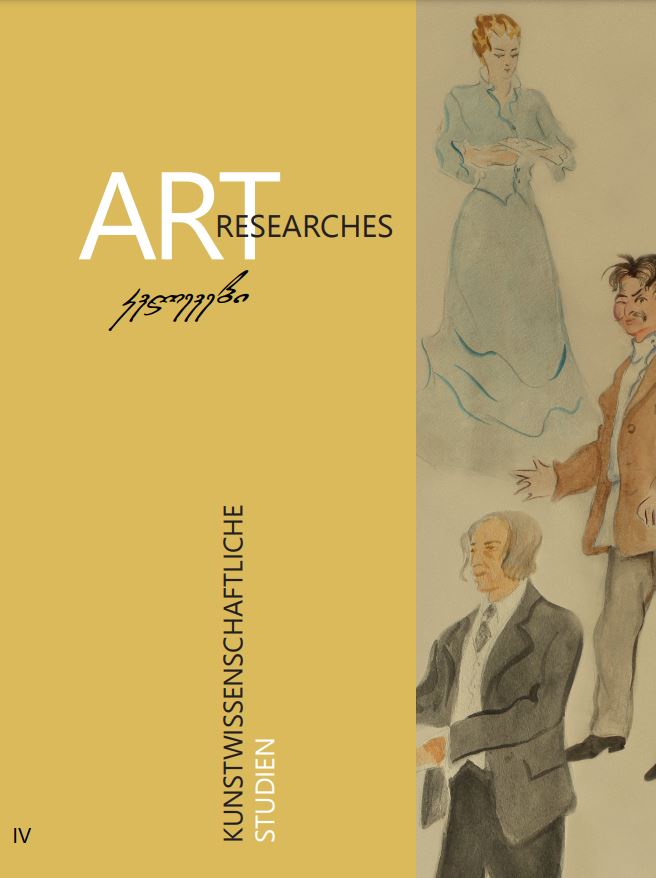კრისტიან-ჟაკის „ფან-ფან ტიტა“ – 70 წლისაა!
Main Article Content
ანოტაცია
Christian-Jacque (1904-1994) occupies a special place in the history of French cinema. His filmography includes 64 feature films and 7 television projects. His last film was a documentary on Marcel Carné – “Carné, l’homme à la caméra” (1985). In 1985, he was honoured with the Cesar d’Honneur for his entire body of work. Christian-Jacque’s first 26 films represent a kind of finger exercises, with the director searching for his own signature and his team of actors and cameramen. It is probably safe to say that Christian-Jacque’s unique signature, his style, his incomparable humour, his special way of handling the camera and the actors begins with his 27th film – with “L’Assassinat du père Noël”, shot in 1941.
In this article, essential moments from Christian-Jacque’s life are presented. However, it also provides an in-depth analysis of the semantics and genre affiliation of his films, as well as their classification.
The most important characteristic of this director’s work is the organic fusion of burlesque, eccentricity and reality, which is a great rarity. Special emphasis is placed on films made after literary models, such as – “Carmen”, 1945, after Prosper Merime, “La Chartreuse de Parme”, 1948, after Stendal, “Nana”, 1955, after the novel by Emile Zola, “La Tupile Noire”, 1964, free adaptation after the novel by Alexandre Dumas (père), among others.
The film “Fanfan la Tulipe” is analysed in detail. “Fanfan la Tulipe”, 1952, is an adaptation of the 18th century folk song written and adapted by Émile Debrauxin 1819, also based on the novel by Pierre-Gilles Veber. The special feature of Christian-Jacque’s cinematography is also that the director mastered different genres in equal measure – comedy, psychological thriller, drama, elegiac novella, burlesque historical films, but also biographical films – the so-called biopics (“La Symphonie fantastique” about the life of Hector Berlioz with the great actor JeanLouis Barrault, among others).
While working on “Bluebeard”, Christian-Jacques discovered a new form of cinematic solutions by introducing the opposition between the subject and the means of expression. In reality, it happened spontaneously, but later ChristianJacque learned to deal with it, and “Fanfan La Tulipe” is the best proof of that. Everything here is well thought out, everything is perfectly worked out. ChristianJacques is so thorough that he could have given a lecture on French history with a magnificent set. And at the end, after filtering these settings through the prism of his ironic imagination, he has his heroes dance to the rhythm of a waltz. This is what makes his story froth like the delicious champagne. He does not even try to spin a parody. On the contrary, he strives to be very serious. It is easy to imagine the thinking of the three scriptwriters: “We make a historical figure out of the name of the hero of the Chancon. Fanfan is wonderful, Fanfan is nobody. Fanfan will go down in French history, revised and corrected by us”. And – that’s what happened! And Christian-Jacque does it like a guignol theatre, so breathtaking! And so this humour becomes a pure French burlesque. Christian-Jacque had a masterful team: scriptwriters – René Wheeler, René Fallet, Christian-Jacque, Henri Jeanson; cinematographer – Christian Matras; composers – Maurice Thiriet and Georges Van Parys; the actors: Gérard Philipe – Fanfan La Tulipe; Gina Lollobrigida – Adeline La Franchise, Marcel Herrand – Louis XV, Olivier Hussenot – Tranche-Montagne, Noёl Roquevert – Fier-à-Bras, Henri Rollan – Le maréchal d’Estrées (de la Comédie Française), Nerio Bernardi – La Franchise, Jean-Marc Tennberg – Monsieur Lebel, Geneviève Page – La Marquise de Pompadour, Lucien Callamand – Le Maréchal de Brandenburg, the voice of the historian has been taken over by the actor of the Comedie Francaise Jean Debucourt.
In the appendix of the article, the literary source of the film is cited bilingually – French and in the Georgian translation by the author of the article.
